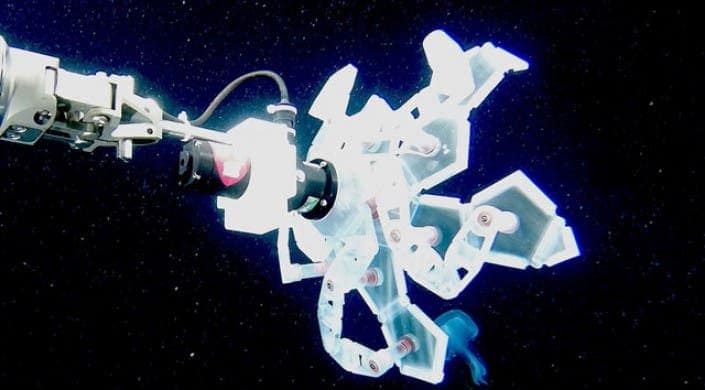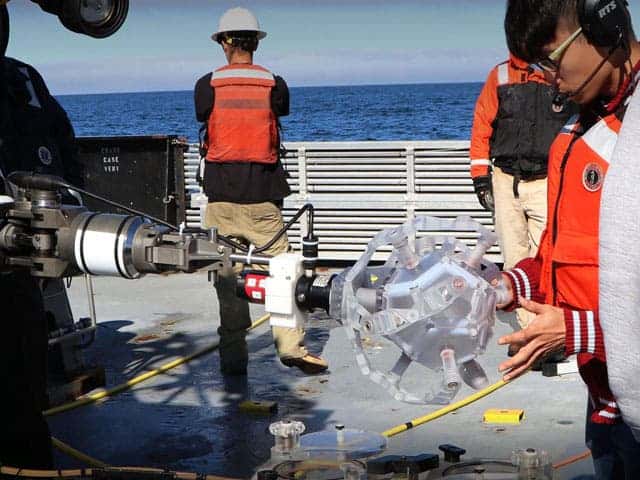
You better look out, Squirtle! Researchers at Harvard University and the Radcliffe Institute for Advanced Study recently demonstrated an origami-inspired polyhedral enclosure that can capture and release delicate sea creatures, such as jellyfish or squidsf, without causing any harm.
Gotta catch em all!
In order to study marine creatures, researchers often have to rely on bulky underwater equipment that isn’t suited for the capture of soft-bodied creatures, which all too frequently get hurt or even killed.
“We approach these animals as if they are works of art: would we cut pieces out of the Mona Lisa to study it? No – we’d use the most innovative tools available. These deep-sea organisms, some being thousands of years old, deserve to be treated with a similar gentleness when we’re interacting with them,” said collaborating author David Gruber, who is a Radcliffe Fellow and Professor of Biology and Environmental Science at Baruch College, CUNY.
The idea for a pokéball-like robotic device was seeded by first author Zhi Ern Teoh, who during his stint at the Harvard Graduate School of Design was studying folding mechanisms through computational means. Brennan Phillips, who used to work in the same lab at Harvard’s Wyss Institute, saw some of Teoh’s designs that involved folding a flat surface into a 3D shape using motors, and suggested that these could be adapted to capturing sea creatures.
Teoh got to work and designed five identical 3D-printed polymer petals, which are attached to a series of rotating joints that form a scaffold when linked together. A single motor is used to apply torque to the point where the five petals meet, causing the entire structure to fold up into a hollow dodecahedron — a twelve-sided, almost-round box.
The folding is entirely directed by the origami-inspired design of the joints and the shape of the petals, requiring no additional energy input.

In order to test their device, called the Rotary Actuated Dodecahedron (RAD), the researchers traveled to Mystic Aquarium in Mystic, CT. There, the team proved that RAD was able to collect and release moon jellyfish underwater. The next step was testing RAD in-field; the device was mounted on an underwater remotely-operated vehicle (ROV), which dived to depths of 500-700 m (1,600-2,300 ft.). Using a joystick, a human controlled ROV’s manipulator arm to operate the sampler and capture squid and jellyfish in their natural habitats. During both capture and release, no creature was harmed.
“The RAD sampler design is perfect for the difficult environment of the deep ocean because its controls are very simple, so there are fewer elements that can break. It’s also modular, so if something does break, we can simply replace that part and send the sampler back down into the water,” said Teoh in a statement. “This folding design is also well-suited to be used in space, which is similar to the deep ocean in that it’s a low-gravity, inhospitable environment that makes operating any device challenging.”
Teoh and colleagues now plan to design a more rugged version that is more suited to heavy-duty applications, such as marine geology.
The researchers, however, envision a far wilder version of RAD, one equipped with all sorts of sensors, but also a DNA sequencer, such that data can be collected about the size, properties, and genome of a captured soft-bodied animal — before the animal is safely released. It’s “almost like an underwater alien abduction,” commented Gruber.
The findings were reported in the journal Science Robotics.






